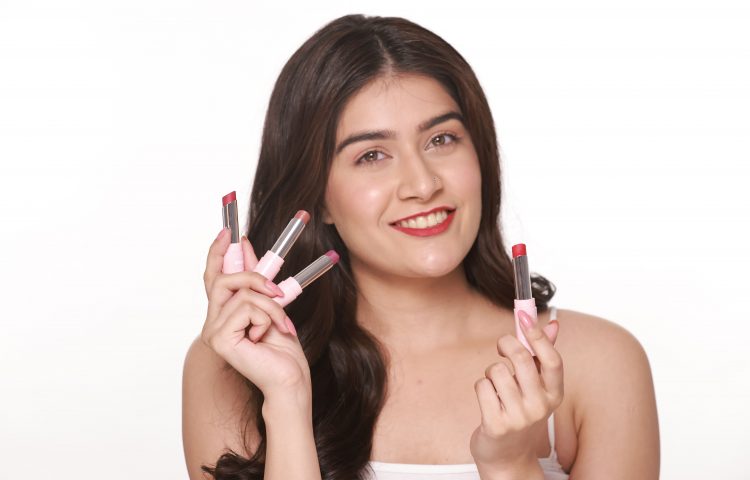An average woman applies 7 pounds of lipstick throughout her lifetime. To make matters worse, many women don’t even know what they’re putting on their lips that includes harmful chemicals that can lead to serious health problems such as cancer, allergies, and even reproductive issues. Many lipsticks tested by the FDA and the Campaign for Safe Cosmetics contained lead and other toxic metals.
This guide will explore all the lipstick ingredients harmful to you and the solution to eliminate them.

The List of Harmful Ingredients in Lipstick to Avoid
1. Lead
Women absorb lead through their lips and ingest it with food. Lead easily accumulates in bodies through blood, causing health problems like miscarriage, reproductive harm, and learning difficulties. The amount of lead in lipstick is not much, and some scientists say there is no evidence that it causes damage. But the heavy metals can cause neurological problems, especially in children. This is why many states have banned lead-based paint and why many companies have removed lead from gasoline. A vegetarian lipstick can be the best alternative to a chemical containing one.
2.Propylene Glycol
Propylene glycol is a petroleum-based by product used as antifreeze and brake fluid. It is also used in skincare products as a preservative and humectant to help keep skin moist. The FDA says that propylene glycol is safe when used in small amounts, but we shouldn’t consume or lick our lips to avoid ingesting this harmful chemical. You may quit using inorganic lipsticks in a scenario like this while replacing them with a safer cruelty-free matte lipstick.
3. Methylparaben
Methylparaben belongs to a group of chemicals known as parabens. Many cosmetics and personal care products contain parabens and are harmful lipstick ingredients you may come across. Parabens cause allergic reactions and skin rashes. Some studies have suggested that parabens can increase breast cancer risk when applied to the skin. Parabens could increase breast cancer risk because they mimic estrogen, which can disrupt normal hormone function, which can lead to the development of breast cancer cells.
4. Retinyl Palmitate
If you have ever stopped to read the ingredients on a lipstick, chances are you have seen “retinyl palmitate” listed on the packaging. Retinyl Palmitate is a form of Vitamin A, and it is often combined with other chemicals to enhance the skin. But what many people do not know is that this chemical can be toxic and lead to severe side effects if ingested. The health effects of retinyl palmitate have been controversial for decades. On the one hand, vitamin A plays an essential role in human embryonic development and fetal growth. Still, on the other hand, high levels of vitamin A may cause congenital disabilities such as craniofacial anomalies, cardiovascular malformations, and mental retardation.
5. Dyes
Many people prefer natural ingredients and buy all-natural brands that don’t include synthetic dyes. Unfortunately, some companies still use artificial dyes derived from petroleum products or coal tar; these chemicals aren’t considered safe or green by any stretch of the imagination. Some of them are known carcinogens that have been linked to congenital disabilities and other long-term health issues. Dyes can also cause skin irritation and allergies because of their chemicals. The toxicity of these dyes can be absorbed through the skin, causing an inflammatory response.

Takeaway
Every woman has a favorite lipstick, but it’s essential to know that the FDA allows companies to make their own decisions about safety. There is no mandatory testing for lipsticks or anything else. Some cosmetic companies choose to test their products, and some don’t. It’s up to you to do your research and decide which company you want to trust with your body. To avoid using harmful lipstick ingredients, it’s always a good idea to opt for a matte lipstick shade that’s cruelty-free.
Choosing a paraben-free lipstick brand can solve dye-based lipsticks or cosmetic products. Make sure to ask your vendor about the lipstick ingredients and don’t fall prey to the brands that fake themselves to be offering natural products.
Carmine
Since it was first introduced to Europeans, Carmine, which is derived from ground-up cochineal beetles, has been used as a coloring agent. It’s often used in lipsticks and other cosmetics because it makes lips look full and vibrant. The good news is that it’s not commonly found in popular brands today; however, if you want to avoid it altogether, you might consider going for natural or organic options instead.

Why Use Vegetarian Lipsticks?
A vegetarian lipstick contains no carmine or cochineal dye obtained from crushed beetles. A vegetarian lipstick also doesn’t contain
● Beeswax or Lanolin (sheep’s wax).
● Keratin (from nails, hooves and horns),
● Gelatine (from animal bones) or
● Collagen (from tendons, ligaments and skin)
The Bottom Line
Owing to all the adverse effects caused by harmful lipstick ingredients, you should consider choosing safe options. There are many brands of vegetarian lipsticks online today, and most cosmetic companies have at least one line of this type of lipstick in their product lines. Some major companies have entire lines devoted to vegetarian products. If you find a brand that you like, but don’t know if the lipstick is vegetarian or not, try calling the company directly. Not only will they tell you which products are vegetarian and which are not, but they may also be able to recommend additional products that you can use.

